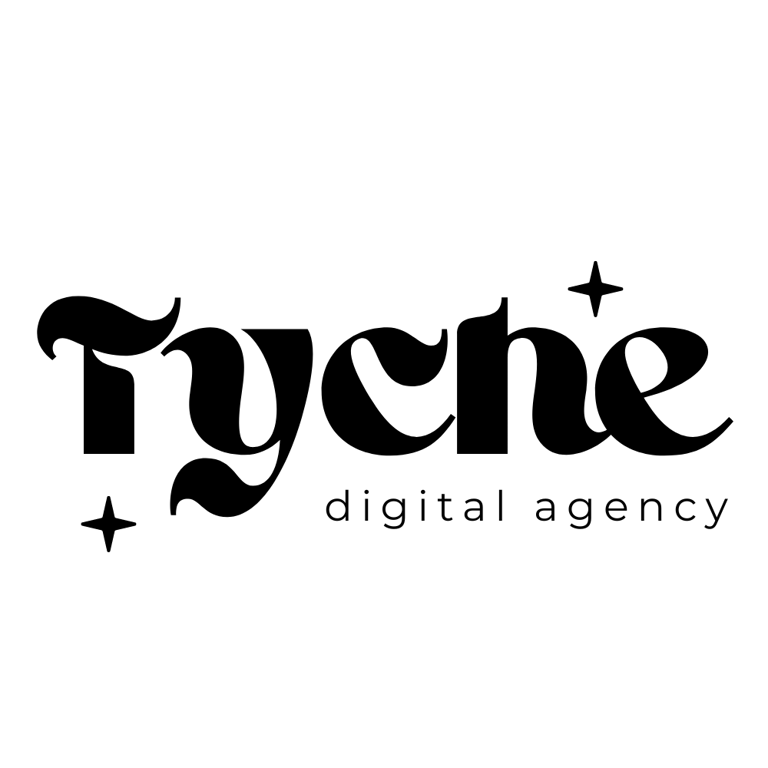Building Effective Lead Magnets and Landing Pages: Your Guide to Capturing Your Target Audience
This guide will walk you through the step-by-step process of creating irresistible lead magnets and high-converting landing pages that speak directly to your target demographic. By the end, you'll have a clear roadmap to implement these strategies yourself—or understand how our team at Tyche can help accelerate your results.
Veronica Dietz
3/11/20258 min read


Building Effective Lead Magnets and Landing Pages: Your Guide to Capturing Your Target Audience
In today's digital marketing landscape, capturing quality leads is the lifeblood of business growth. Yet many businesses struggle with this fundamental aspect, creating lead magnets that fail to convert and landing pages that visitors quickly abandon. After helping hundreds of clients at Tyche Digital Agency transform their lead generation strategies, I've developed a comprehensive framework that consistently delivers results.
This guide will walk you through the step-by-step process of creating irresistible lead magnets and high-converting landing pages that speak directly to your target demographic. By the end, you'll have a clear roadmap to implement these strategies yourself—or understand how our team at Tyche can help accelerate your results.
Part 1: Understanding the Psychology of Lead Generation
Why Lead Magnets Matter
Before diving into tactics, let's understand what we're really doing when we create lead magnets. At its core, a lead magnet is a value exchange—you're asking prospects to give you something valuable (their contact information and attention) in exchange for something they perceive as equally or more valuable (your offer).
The most common mistake I see businesses make is creating lead magnets they think are valuable, rather than what their audience actually wants. This fundamental misalignment is often the root cause of poor conversion rates.
The Psychological Triggers That Drive Conversions
Successful lead magnets tap into powerful psychological triggers:
Immediate Gratification: People want solutions now, not tomorrow.
Specificity: Vague promises don't convert; specific outcomes do.
Perceived Value: Your audience must believe what you're offering is worth more than their email address.
Fear of Missing Out: Limited-time offers create urgency.
Relevance: The offer must align perfectly with the audience's current needs and pain points.
A client of ours in the financial services sector was struggling with a generic "Free Consultation" offer that converted at just 1.2%. When we replaced it with a highly specific "5-Minute Investment Calculator: See How Much Your Current Portfolio Is Actually Costing You," conversions jumped to 7.8%. The specificity, immediate value, and relevance to their target audience made all the difference.
Part 2: Creating Your Ideal Customer Avatar
Beyond Basic Demographics
Before you can create an effective lead magnet, you need to know exactly who you're trying to attract. This goes far beyond basic demographics like age, location, and income.
At Tyche Digital Agency, we use a comprehensive Customer Avatar Framework that explores:
Core Desires: What do they ultimately want to achieve?
Pain Points: What frustrations, challenges, and obstacles do they face?
Objections: What hesitations might they have about your solution?
Information Sources: Where do they go to learn and stay informed?
Decision Criteria: What factors influence their buying decisions?
Current Awareness Level: How familiar are they with solutions like yours?
The Avatar Workshop Exercise
Here's a simplified version of our Avatar Workshop exercise:
Name your avatar (this humanizes them and makes them real)
List their demographics (age, gender, income, education, etc.)
Identify their psychographics (values, interests, lifestyle choices)
Document their goals and challenges (both personal and professional)
Capture their objections (why might they say no to your offer?)
Map their journey (where are they now, and where do they want to be?)
One of our e-commerce clients discovered through this exercise that their primary customer avatar wasn't actually the busy professional they had been targeting, but rather a budget-conscious parent who prioritized quality and longevity over trendiness. This insight completely transformed their lead magnet strategy, resulting in a 43% increase in qualified leads.
Voice of Customer Research
Never assume you know what your audience wants. Validate your avatar with real data:
Surveys: Ask existing customers what they struggle with and what solutions they're seeking.
Interviews: Have in-depth conversations with ideal customers.
Reviews Analysis: Mine product/service reviews (yours and competitors') for pain points and desires.
Social Listening: Monitor relevant conversations on social platforms.
Search Analysis: What questions is your audience asking online?
The language your audience uses is gold—capture it verbatim and use it in your lead magnet and landing page copy. They need to feel like you're reading their mind.
Part 3: Designing Irresistible Lead Magnets
The 7 Most Effective Lead Magnet Formats
Not all lead magnets are created equal. Here are the formats we've found generate the highest-quality leads across industries:
Specialized Assessments/Quizzes: Interactive experiences that provide personalized insights (conversion rates typically 40-60%)
Templates/Swipe Files: Ready-to-use resources that save time (conversion rates typically 25-35%)
Checklists/Cheat Sheets: Simplified processes for achieving specific outcomes (conversion rates typically 20-30%)
Free Trainings/Webinars: Educational content that showcases expertise (conversion rates typically 15-25%)
Case Studies/Success Stories: Proof of concept through real examples (conversion rates typically 15-20%)
Guides/Reports: In-depth content on solving specific problems (conversion rates typically 10-20%)
Free Samples/Trials: Risk-free experience of your product/service (conversion rates vary widely)
The best format depends entirely on your audience's preferences and where they are in their buyer's journey.
Lead Magnet Creation Framework
Follow these steps to create a lead magnet that converts:
Name It Effectively: Use a clear, benefit-driven title that includes numbers when possible (e.g., "7-Step Framework to Double Your Email Open Rates in 30 Days")
Focus on ONE Specific Problem: Your lead magnet should solve one problem exceptionally well, not multiple problems adequately.
Promise a Quick Win: Design your lead magnet to deliver immediate value—something they can implement and see results from quickly.
Make It Actionable: Include specific steps, not just theory.
Position It as an Appetizer: Your lead magnet should demonstrate your expertise while making it clear that you have much more to offer.
Design for Skimmability: Use bullet points, subheadings, and visual elements to make the content easy to digest.
Exceed Expectations: Always deliver more value than promised—this sets the tone for your entire relationship.
Real-World Example: From Flop to Success
A consulting client came to us after their industry whitepaper generated only 12 leads despite significant promotion. We transformed their approach by:
Replacing the generic whitepaper with a "5-Minute Profitability Audit"
Breaking the content into a visually engaging format
Adding customized recommendations based on user inputs
Including a clear next step
The revised lead magnet generated 347 qualified leads in the first month alone—a 28x improvement. The key was shifting from what the company wanted to share to what their audience actually needed.
Part 4: Crafting High-Converting Landing Pages
The Anatomy of a Successful Landing Page
Your landing page has one job: convert visitors into leads. Every element should support this goal.
Essential Landing Page Elements:
Attention-Grabbing Headline: Clearly state the primary benefit (what problem are you solving?)
Compelling Subheadline: Support the headline with additional context
Engaging Visual: Show your lead magnet or the result it delivers
Benefit-Driven Bullet Points: 3-5 specific benefits (not features)
Social Proof: Testimonials, statistics, or trust indicators
Clear Call to Action: Tell visitors exactly what to do next
Minimalist Form: Ask for only essential information
Urgency/Scarcity Elements: Give a reason to act now
Objection Handling: Address common concerns preemptively
Mobile Optimization: Ensure flawless performance on all devices
The 5-Second Test
Your landing page should pass the 5-second test: Within five seconds, a visitor should understand:
What you're offering
Who it's for
Why they should care
How to get it
If your page fails this test, simplify and clarify until it passes.
Landing Page Optimization Techniques
Once your page is live, continuous optimization can dramatically improve results:
A/B Testing: Systematically test different headlines, images, form fields, and CTAs.
Heat Mapping: See where visitors focus their attention and click.
Session Recordings: Watch how real users interact with your page.
Exit Intent Popups: Capture leads who attempt to leave.
Load Speed Optimization: Every second of delay reduces conversions by 7%.
A SaaS client implemented these optimization techniques over 90 days, increasing their conversion rate from 3.2% to 11.7%—more than tripling their lead volume without increasing traffic.
Common Landing Page Mistakes to Avoid
Navigation Menus: These distract from your conversion goal.
Multiple Calls to Action: Stick to one clear action.
Generic Stock Photos: Use authentic, relevant imagery.
Feature-Focused Copy: Focus on benefits, not features.
Asking for Too Much Information: Each additional form field decreases conversion rates.
Failing to Build Trust: Include security badges, testimonials, and guarantees.
Unclear Value Proposition: If they don't immediately understand the value, they'll leave.
Part 5: Integrating Your Lead Magnet into a Strategic Funnel
Beyond the Initial Conversion
Capturing the lead is just the beginning. What happens next determines whether that lead becomes a valuable customer or a dead end.
The Ideal Post-Conversion Sequence:
Immediate Delivery: Your lead magnet should be delivered instantly, with no friction.
Thank You Page Optimization: Use this often-neglected page to guide leads to a logical next step.
Welcome Sequence: Develop a strategic email sequence that builds relationship and establishes authority.
Segmentation Strategy: Use behavior and engagement data to segment leads for personalized follow-up.
Conversion Bridge: Create a clear path from free lead magnet to paid offering.
The 90-Day Lead Nurturing Framework
At Tyche Digital Agency, we've developed a 90-day framework that turns cold leads into customers:
Days 1-7: Build Trust
Deliver on your promise (lead magnet)
Provide additional unexpected value
Tell your story and establish credibility
Days 8-30: Educate and Engage
Address common objections proactively
Share case studies and success stories
Introduce your methodology/approach
Days 31-60: Position Your Solution
Highlight the cost of inaction
Demonstrate your unique approach
Invite engagement (surveys, feedback)
Days 61-90: Convert
Present your offer as the logical next step
Provide social proof specific to their situation
Create urgency/scarcity when appropriate
This framework has helped clients achieve conversion rates from lead to customer as high as 15-25%, compared to industry averages of 1-3%.
Part 6: Measuring Success and Optimizing Results
Key Metrics to Track
To optimize your lead generation system, track these critical metrics:
Visitor-to-Lead Conversion Rate: What percentage of landing page visitors become leads?
Lead Magnet Delivery Rate: Are people successfully receiving your lead magnet?
Consumption Rate: How many leads actually use your lead magnet?
Lead-to-MQL Conversion: How many leads become marketing qualified leads?
MQL-to-SQL Conversion: How many marketing qualified leads become sales qualified leads?
Cost Per Lead: How much are you spending to acquire each lead?
Lead Value: What's the average value of a lead over time?
ROI: What's your overall return on investment?
The Continuous Improvement Cycle
Implement this 4-step cycle for ongoing optimization:
Analyze: Review performance data against benchmarks.
Hypothesize: Develop theories about potential improvements.
Test: Implement controlled experiments.
Implement: Roll out successful changes and repeat the cycle.
A disciplined approach to this cycle can result in conversion improvements of 3-5% per month, compounding over time to transform your results.
Part 7: Implementation Plan: Your Next 90 Days
DIY Implementation Timeline
For those ready to implement this framework themselves:
Weeks 1-2: Research and Strategy
Complete customer avatar development
Conduct voice of customer research
Identify ideal lead magnet format and topic
Weeks 3-4: Lead Magnet Creation
Develop lead magnet content
Design visual elements
Set up delivery system
Weeks 5-6: Landing Page Development
Write compelling landing page copy
Design page layout and visuals
Implement tracking and analytics
Weeks 7-8: Funnel Integration
Create thank you page
Develop email nurture sequence
Set up segmentation rules
Weeks 9-10: Traffic Generation
Identify primary traffic sources
Develop promotional content
Launch initial campaigns
Weeks 11-12: Optimization
Review initial performance data
Implement first round of improvements
Scale successful elements
How Tyche Digital Agency Can Help
While this DIY approach can certainly yield results, many businesses find that working with experts accelerates their success and eliminates costly mistakes. At Tyche Digital Agency, we offer two paths to support your journey:
Tyche Implementation Services
Our full-service implementation includes:
Customer research and persona development
Lead magnet strategy, creation, and design
High-conversion landing page development
Email nurture sequence creation
Traffic generation campaigns
Ongoing optimization and scaling
With our team handling implementation, you can expect to have your complete lead generation system up and running within 30-45 days, with continuous optimization driving improving results over the following months.
Tyche 90-Day Mentoring Program
For businesses that prefer to build in-house capability while benefiting from expert guidance, our mentoring program provides:
Weekly strategy sessions with a dedicated consultant
Templates and frameworks for each implementation phase
Review and feedback on work completed
Priority access to our support team
Custom training for your team members
Our mentoring clients typically achieve full implementation within 90 days while developing valuable in-house skills that benefit their marketing long-term.
Conclusion: The Time to Act Is Now
In today's competitive landscape, effective lead generation isn't a luxury—it's a necessity. Every day without an optimized lead capture system means potential customers finding your competitors instead of you.
The framework I've outlined in this guide has helped hundreds of businesses transform their lead generation from a frustrating guessing game into a predictable, scalable system for growth. Whether you choose to implement it yourself or accelerate your results with expert help, the important thing is to begin.
Your ideal customers are out there right now, looking for solutions to problems you can solve. The question is: will they find you?
Ready to transform your lead generation strategy?
Book a free 60-minute strategy session with our team to discuss your specific goals and identify the fastest path to results. During this call, we'll:
Review your current lead generation efforts
Identify your biggest opportunities for improvement
Recommend a customized approach based on your resources and timeline
Answer any questions about implementation
Schedule Your Free Strategy Session →
No pressure, no obligations—just actionable insights you can use right away.
About the Author:
Veronica Dietz is the Lead Strategist at Tyche Digital Agency, where she has helped hundreds of businesses implement effective lead generation systems. With over 15 years of experience in digital marketing, Veronica specializes in creating data-driven strategies that turn strangers into leads and leads into loyal customers.






